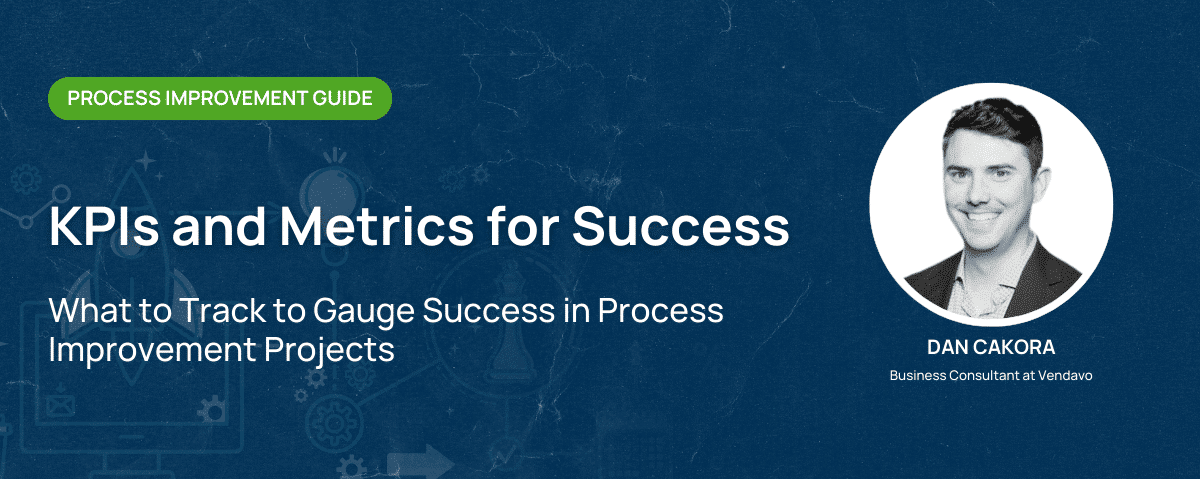
When it comes to process improvement, success is about more than hitting your targets. You need to be able to make meaningful progress, but that requires knowing what success looks like from the start and measuring it throughout. Dan Cakora, Business Consultant at Vendavo, explains what you need to know about the KPIs and metrics you should be measuring to gauge your process improvement project’s success.
Process improvement can feel overwhelming. Where do you start? How do you measure success? How do you overcome the pitfalls you know will crop up?
The good news is that a few practical steps and insights will help you build the best business case and navigate your process improvement journey. Whether you’re looking to speed quote cycle times, enhance pricing guidance, or boost overall profitability, you’ll be on track toward lasting success.
Let’s turn theory into action.
4 Steps to Create Your Success Picture
First, remember that success isn’t a one-size-fits-all deal. It’s unique to each organization, including yours. Here are a few steps strategic steps to help you get started:
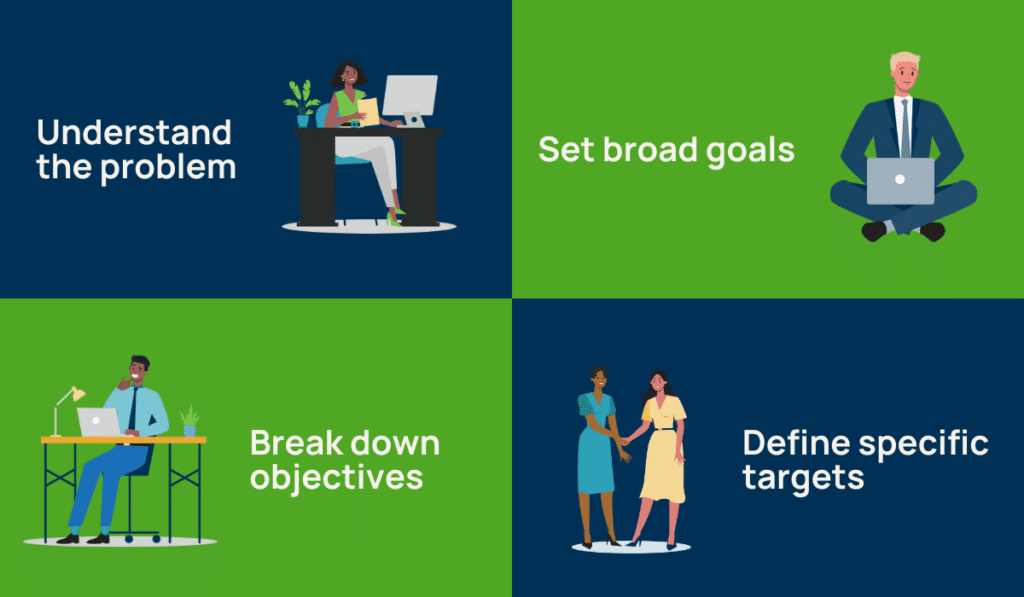
1. Understand the problem
Clearly identify the problem to set the foundation for effective process improvement. This ensures that your efforts are targeted and impactful.
- Diagnose the issues – look at your current process and identify pain points
- Gather data – collect data to understand the extent and impact of the problem
- Involve stakeholders – engage them to get a comprehensive view of the issue
- Define the problem – articulate the problem and make sure everyone understands
2. Set broad goals
Large-scaled goals make certain that process improvement efforts align with your business strategy. They provide clear direction, help prioritize actions, and drive meaningful results.
- Identify desired outcomes – what you hope to achieve with your improvements
- Align with business objectives – make sure your goals match overall strategies
- Communicate goals – share with your team to ensure all are on the same page
- Prioritize goals – rank goals based on importance and business impact
3. Break down objectives
Transform broad goals into actionable steps to ensure you focus on key value drivers. This makes the improvement process more manageable and targeted.
- Set objectives – break down broad goals into specific, actionable objectives
- Identify value drivers – determine what drives value in each objective
- List action steps – outline the steps needed to achieve each objective
- Assign responsibilities – determine who will be responsible for each action step
4. Define specific targets
You need to track progress so your improvement efforts stay on the right path. Clear, measurable targets help you monitor success and make necessary adjustments.
- Set metrics – define how success will be measured for each objective
- Get baseline data – gather baseline information to compare against future results
- Set SMART targets – specific, measurable, achievable, relevant, and time-bound
- Review and adjust – regularly review progress toward targets and adjust as needed
While the specifics will vary, the overall approach remains the same. If your goal is to boost revenue, for example, focus on improving your price-setting process. A specific target could be setting premiums on good, better, and best products for higher premiums on the best.
Tracking the Right KPIs
When should you start tracking key performance indicators (KPIs) and other metrics? The short answer is right away. Processes and data aren’t born perfect, and waiting to make them perfect means missing out on valuable insights.
Here are a few KPIs you may want to track:
- Quote cycle time – measures the time it takes to complete a process from start to finish; helps identify bottlenecks and inefficiencies
- Revenue growth – tracks increase in revenue over a specific period; indicates overall financial success of process improvements
- Price consistency – when prices are stable and predictable, customers are more likely to feel confident in their purchases and trust the brand
Remember, the KPIs you choose will depend on your operations. Start measuring early, even if it shows some initial inefficiencies. This lets you learn and adjust in real time.
Top 10 Tips for Tracking KPIs
Effectively tracking KPIs is crucial for assessing the success of your process improvement efforts. Here are some top tips to ensure you get the most out of your KPI tracking:
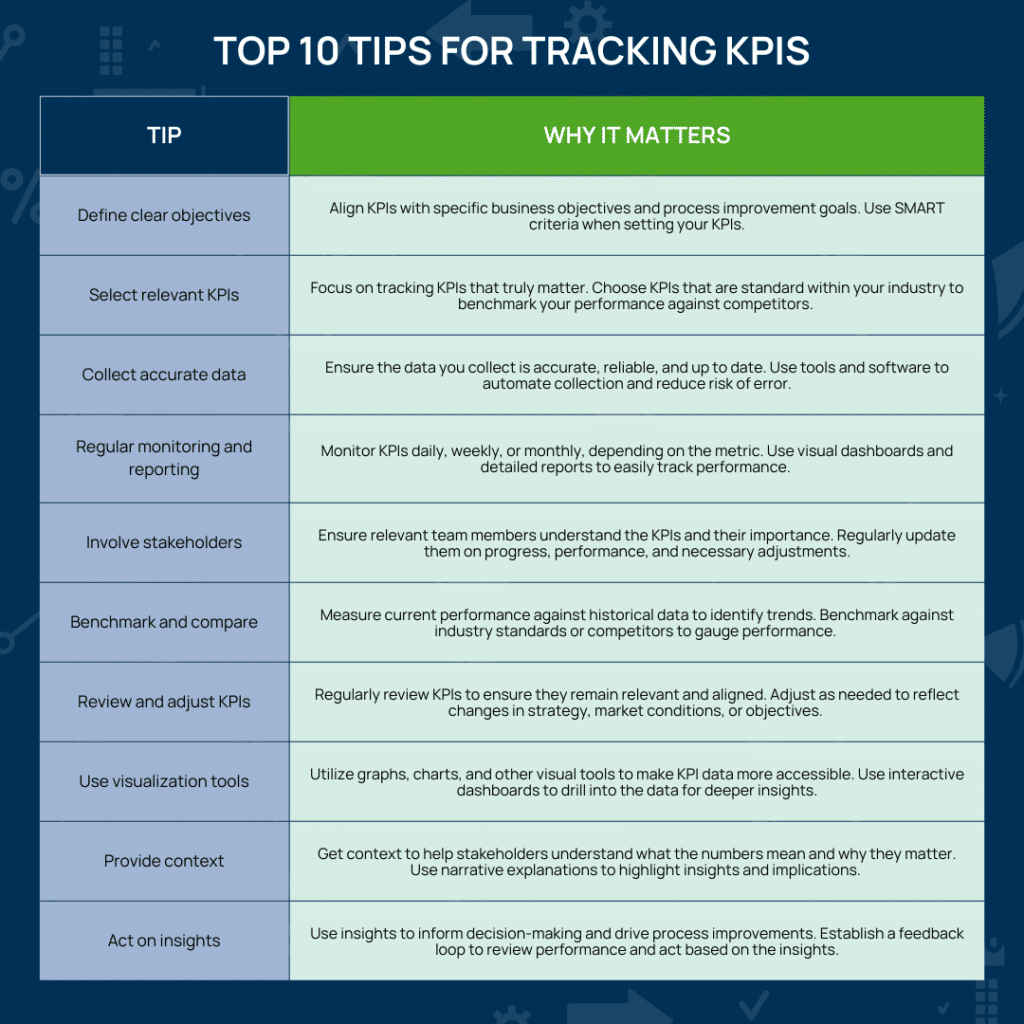
- Define clear objectives – align your KPIs with your specific business objectives and process improvement goals. Use SMART criteria when setting your KPIs.
- Select relevant KPIs – focus on tracking a few KPIs that truly matter rather than overwhelming yourself with too many metrics. Choose KPIs that are standard within your industry to benchmark your performance against competitors.
- Collect accurate data – ensure the data you collect is accurate, reliable, and up to date. Use tools and software to automate collection and reduce the risk of error.
- Regular monitoring and reporting – monitor KPIs daily, weekly, or monthly, depending on the metric. Use visual dashboards and detailed reports to easily track and communicate KPI performance.
- Involve stakeholders – ensure that all relevant team members understand the KPIs and their importance. Regularly update them on progress and involve them in discussions about performance and necessary adjustments.
- Benchmark and compare – measure current performance against historical data to identify trends and improvements. Benchmark against industry standards or competitors to gauge your relative performance.
- Review and adjust KPIs – regularly review your KPIs to ensure they remain relevant and aligned with evolving sales and business goals. Be prepared to adjust as needed to reflect changes in strategy, market conditions, or business objectives.
- Use visualization tools – utilize graphs, charts, and other visual tools to make KPI data more accessible. Consider interactive dashboards that allow users to drill down into the data for deeper insights.
- Provide context – get context to help stakeholders understand what the numbers mean and why they matter. Use narrative explanations to highlight key insights and implications.
- Act on insights – use insights to inform decision-making and drive process improvements. Establish a feedback loop where performance is regularly reviewed, and actions are taken based on the insights gained.
By following these tips, you can ensure that your KPI tracking is effective, insightful, and drives continuous improvement in your business processes.
How to Define Success in Commercial Process Improvements
Success in commercial process improvement is all about hitting your goals. For pricing pros, this often means improving profitability. It’s crucial to understand if better margins result from your actions or external factors.
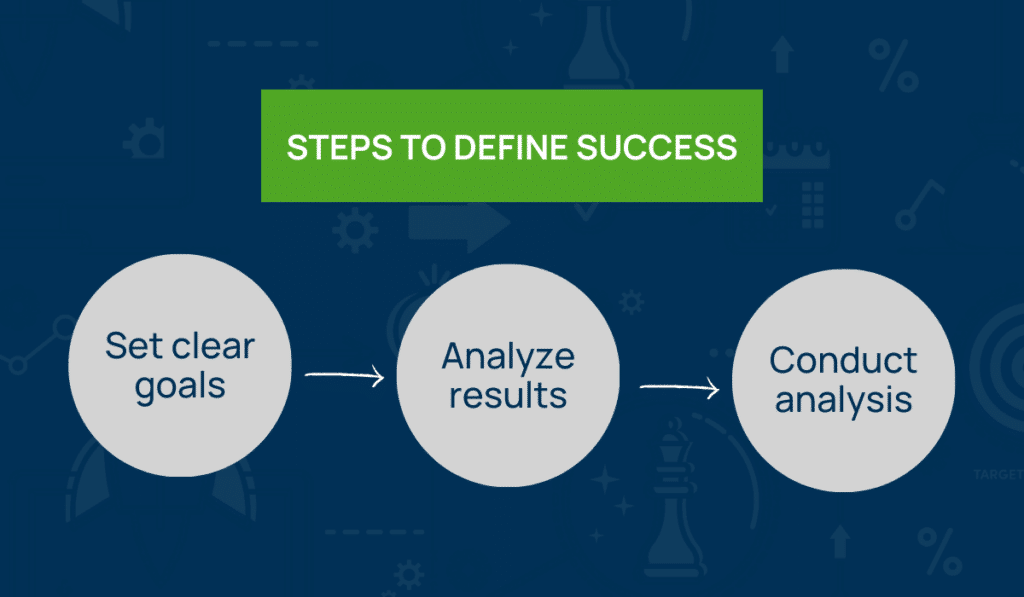
Steps to Define Success
- Set clear goals – tie success to goal attainment
- Analyze results – determine if margin improvements are due to your actions.
- Conduct analysis – use tools like price-volume mix analysis to pinpoint change-drivers
To determine wins and losses, start with your transactional data. Compare different periods. Then, compare transactional data with quote data. Inconsistent quote tracking can make this tricky, but establishing clear criteria for wins and losses helps refine your understanding of your processes.
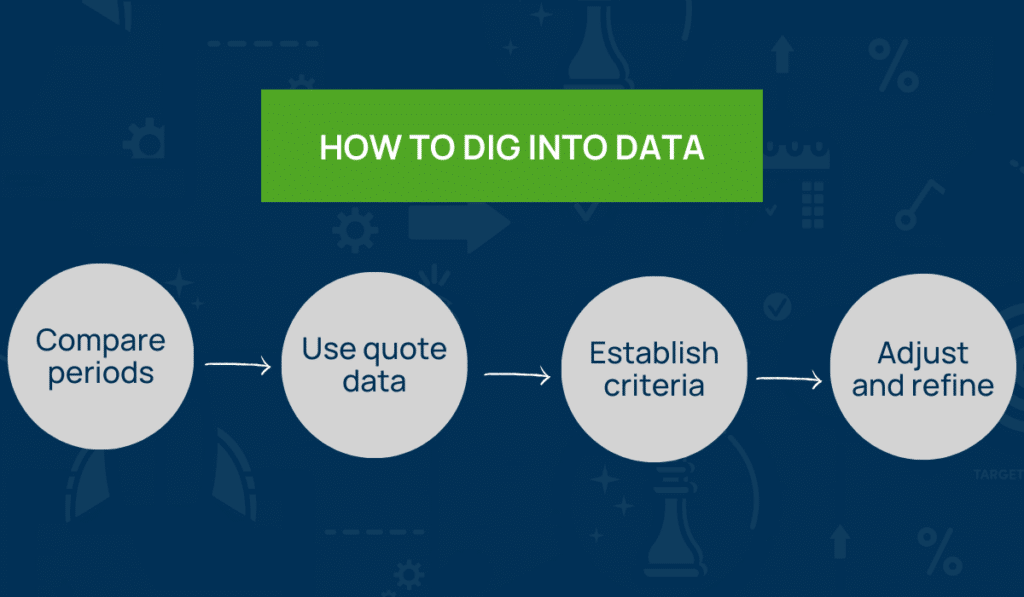
Dig into Data
- Compare periods – analyze transactional data from different time periods
- Use quote data – compare transactional data with quote data
- Establish criteria – set clear definitions for wins and losses
- Adjust and refine – use data insights to make informed adjustments
How Vendavo Helps Measure Success
Vendavo’s Value Acceleration team partners with customers to define and measure success. They provide guidance, track metrics, and ensure commercial excellence goals are met.
This hands-on support turns theoretical improvements into real, measurable results. It includes:
- Understand your challenges
- Defining success
- Helping to set clear success metrics
- Providing guidance, expert advice, and support
- Tracking metrics
- Monitoring progress and results continuously
- Making data-driven adjustments
- Making sure commercial excellence goals are achieved
A quick customer success story:
After implementing process improvements, a manufacturing customer teamed up with Vendavo to measure the impact. Despite the challenges of extensive change management, they saw a huge $49 million improvement. This success came from better price-setting, cost increase management, and effective churn management.
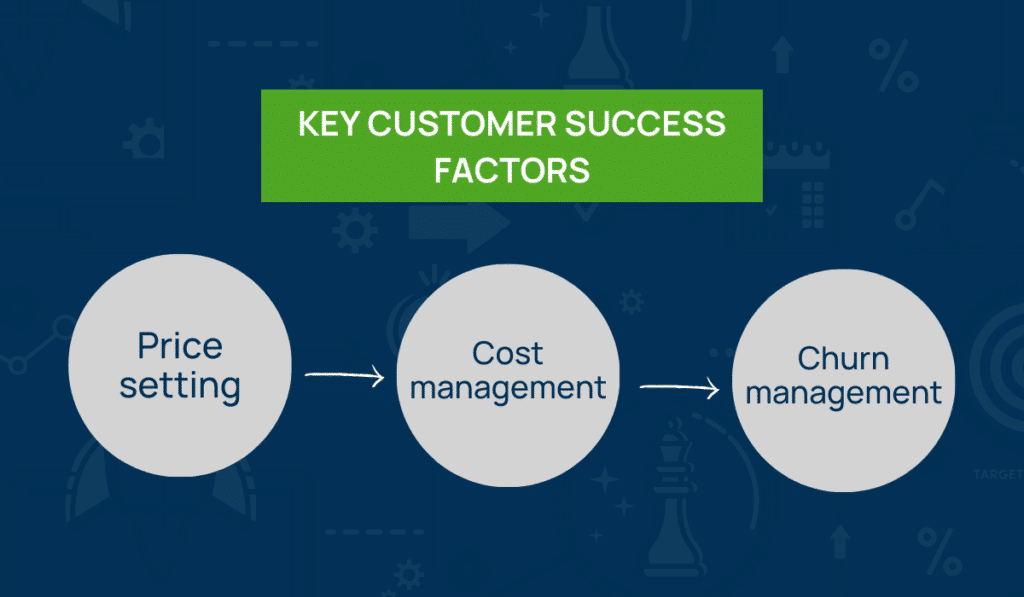
Key Customer Success Factors
- Price-setting – improved processes for setting prices
- Cost management – effective handling of cost increases
- Churn management – managing customer churn to ensure profitability
Success in process improvement is about setting goals, understanding your unique challenges, continuously measuring progress, and making adjustments based on real-world data. Vendavo’s expertise and support can help turn your improvement efforts into tangible, measurable success.
Ready to take your organization’s growth and profitability to the next level? Reach out today to speak with a Vendavo expert about how our full suite of commercial excellence and revenue optimization solutions can help.
